Cannabis News
Criminalizing Cannabis Doesn’t Work at All
Published
7 months agoon
By
admin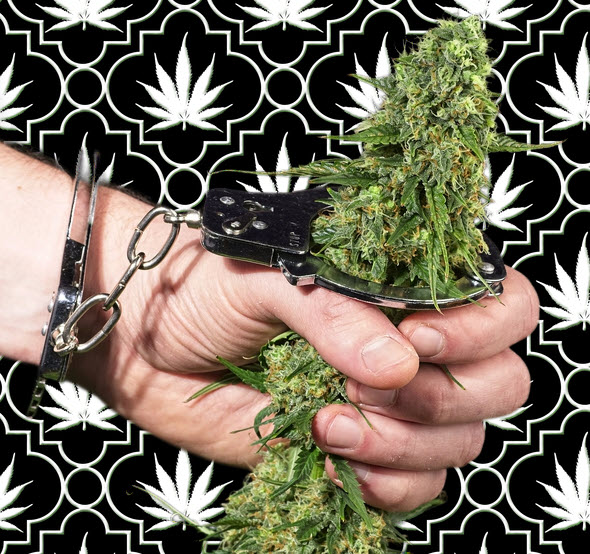
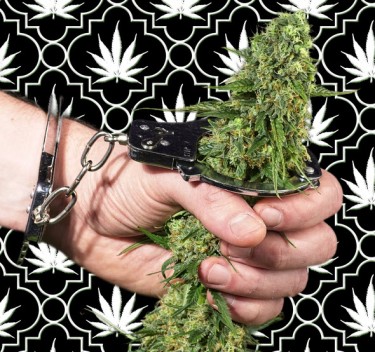
Why criminalization doesn’t curtail consumption
The spirit of prohibition is rooted in the desire to restrict individuals from accessing certain substances or engaging in particular activities deemed harmful or undesirable by those in power. At its core, prohibition is a paternalistic approach that employs the threat of severe consequences, often in the form of state-sanctioned violence, to discourage and punish those who dare to defy the established rules. If we were to remove the veneer of governmental authority from this equation, the true nature of prohibition would be laid bare as a hostile and coercive scenario, where the individual’s autonomy is subjugated to the whims of the ruling class.
Proponents of prohibition argue that this looming threat of violence is a necessary evil, a means to an end in the quest to curtail consumption and send a clear message to impressionable youth that certain behaviors will not be tolerated. They claim that by instilling fear of legal repercussions, society can effectively deter individuals from engaging in prohibited activities, thereby protecting them from potential harm. “The law will punish you!” becomes the rallying cry of those who believe that the heavy hand of the state is the only way to maintain order and public health.
However, a recent Gallup poll has called into question the very foundation upon which the edifice of prohibition is built. The survey found that rates of marijuana use are nearly identical in states that have legalized the substance compared to those that continue to maintain its prohibition. This startling revelation suggests that criminalization has little impact on actually curbing consumption, challenging the long-held belief that the threat of punishment is an effective deterrent.
In light of this new evidence, it is time to ask ourselves: isn’t there a better way? If prohibition fails to achieve its stated goal of reducing substance use, while simultaneously perpetuating a system of violence and oppression, should we not seek alternative approaches that prioritize harm reduction, education, and individual liberty? The spirit of prohibition may be deeply entrenched in our society, but the cracks in its foundation are beginning to show, inviting us to imagine a future where the individual’s autonomy is respected and evidence-based policies prevail over fear-mongering and coercion.
The recent Gallup poll on marijuana use in the United States has shed new light on the effectiveness, or lack thereof, of drug prohibition. The survey, which involved interviews with 6,386 U.S. adults from November 30, 2023, to December 8, 2023, found that rates of marijuana use are nearly identical in states that have legalized the substance compared to those that continue to maintain its prohibition. This finding strikes at the heart of the argument that criminalization is necessary to curb drug consumption.
According to the poll, one in 10 American adults reported using marijuana 10 or more times in the past month, while one in five admitted to using cannabis at least once during the same period. When broken down by state legal status, the data revealed that 9.7 percent of adults identify as regular cannabis consumers in states that have enacted legalization, compared to 8.6 percent in non-legal states. This narrow gap in consumption rates suggests that criminalization has little impact on deterring use among American adults.
The poll also examined marijuana use across different age groups and regions. Interestingly, there were no significant differences in consumption rates between adults aged 18-29, 30-39, and 40-49, with all three age groups averaging around 12 percent regular use. The survey accounted for the various methods of marijuana consumption, including smoking, vaping, and consuming edibles, ensuring a comprehensive assessment of use patterns.
Perhaps most striking is the finding that the West region, which includes states like California, Oregon, and Washington that have established adult-use cannabis markets, has a slightly lower usage rate (10 percent) compared to the Middle Atlantic region (11 percent), where only Pennsylvania has maintained prohibition for adult use. This data further undermines the notion that legalization leads to increased consumption.
The Gallup poll provides compelling evidence that the criminalization of drug use has little to no impact on actual consumption rates. As the debate surrounding drug policy continues to evolve, these findings should serve as a catalyst for policymakers to reevaluate the efficacy of prohibition and explore alternative approaches that prioritize public health, harm reduction, and individual liberty over punitive measures that have proven ineffective in curbing substance use. The data speaks for itself: it is time to abandon the failed war on drugs and embrace evidence-based strategies that address the root causes of substance abuse while respecting the autonomy of individuals.
It’s a simple truth that has been consistently demonstrated throughout the history of drug prohibition: those who want to consume substances will find a way to do so, regardless of the legal status or societal stigma attached to their chosen intoxicant. Even during the height of the drug war, when draconian policies and harsh punishments were the norm, consumption rates never significantly declined. In fact, they often remained stable or even spiked in response to the increased pressure from law enforcement, highlighting the futility of attempting to control human behavior through brute force and intimidation.
The reality is that if someone wants to get high, they can and will find a way to do so. It’s a matter of networking and tapping into the right circles, and virtually anyone with a bit of determination and resourcefulness can gain access to illicit substances. Ironically, even playing into stereotypes can sometimes lead to success in this endeavor, as the black market thrives on the very prejudices and assumptions that society perpetuates.
But the larger point here is that drugs are an inextricable part of our society, woven into the fabric of human experience for millennia. From ancient rituals to modern-day experimentation, the desire to alter one’s consciousness has been a constant throughout history. It’s high time we recognize this reality and adjust our approach accordingly, rather than clinging to the misguided notion that we can somehow eradicate drug use through punishment and prohibition.
By keeping substances illegal, we create a host of other risks and problems that only serve to compound the harm associated with drug use. The unregulated nature of the black market means that users have no way of knowing the purity or potency of the substances they consume, leading to increased risk of overdose and other adverse health effects. Moreover, the criminalization of drug use perpetuates a cycle of stigma, marginalization, and incarceration that tears families and communities apart, while doing little to address the underlying causes of addiction and substance abuse.
It’s time for a paradigm shift in how we approach drug policy. Rather than futilely attempting to eliminate drug use through prohibition, we must acknowledge that intoxication is a part of the human experience and work to mitigate the harms associated with it through evidence-based strategies rooted in public health and harm reduction. By decriminalizing substance use and treating it as a matter of personal choice and individual liberty, we can create a society that is more compassionate, more just, and ultimately safer for all. Because at the end of the day, those who wanna smoke, will smoke – and it’s up to us to ensure that they can do so in a way that minimizes risk and maximizes well-being.
As we navigate the ever-shifting landscape of drug policy, it’s crucial to remain vigilant and aware of the potential pitfalls that lie ahead. In recent years, I’ve noticed a polar shift from the left to the right, a trend that, while bearable for now, carries with it the risk of veering too far into the dangerous territory of the “drug war.” It’s important to remember that it was through the lens of the “polar-right” that prohibition first laid its roots, and we must be cautious not to repeat the mistakes of the past.
As the debate surrounding cannabis legalization continues to evolve, it’s essential to scrutinize the policies being put forth and to recognize when they may not be in the best interest of the people. The proposed shift to Schedule-III, for example, is not the victory that many advocates have been fighting for. It’s not the true legalization that the cannabis community seeks, but rather a half-measure that fails to address the fundamental issues at play.
The people who have fought tirelessly for cannabis reform want nothing less than the recognition of their fundamental human right to grow, cultivate, sell, and gift this plant as they would any other commodity, like tomatoes. They seek a world where the government respects their autonomy and trusts them to make informed decisions about their own well-being, without the need for excessive regulation or control.
Instead, what we’re seeing is a government that seems intent on playing the pharmaceutical game, attempting to schedule cannabis in a way that would effectively remove it from the hands of the people and place it under the control of corporate interests. This is not the vision that the cannabis community has been fighting for, and it’s crucial that we recognize this fact and push back against any attempts to subvert the will of the people.
As we move forward, let us hold fast to the hope that the past will remain in the past, that the dark days of prohibition will fade away into the annals of history, and that the institutions that have long kept the gates of progress closed will wither and crumble.
Let us work together to build a future where the autonomy and liberty of the individual are respected, where evidence-based policies prevail over fear and stigma, and where the harms of the drug war are finally laid to rest.
May we learn from the mistakes of the past and forge a new path forward, one that values compassion, understanding, and the fundamental rights of all people.
LEGAL VS NON-LEGAL WEED STATES, READ ON…
You may like
-
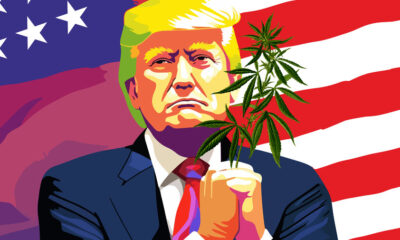

Latest Trump Weed Rumor – Trump Will Federally Deschedule and Decriminalize Cannabis, but Not Legalize It
-


Webinar Replay: Post-Election Cannabis Wrap – Smoke ’em if You’ve Got ’em
-


I Had Just One Puff
-


Marijuana firms Eaze, Green Dragon find new life after $10 million capital infusion
-
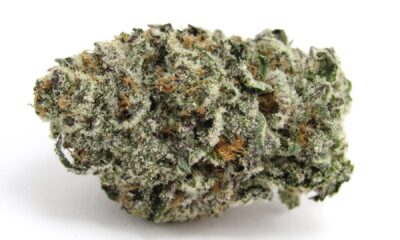

Get some rest on Modified Grapes—November’s Leafly HighLight
-
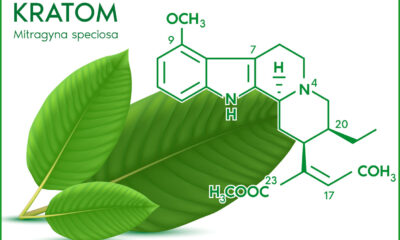

Is Kratom Addictive? Understanding Dependence, Risks, and Safe Usage
Cannabis News
Latest Trump Weed Rumor – Trump Will Federally Deschedule and Decriminalize Cannabis, but Not Legalize It
Published
10 hours agoon
November 14, 2024By
admin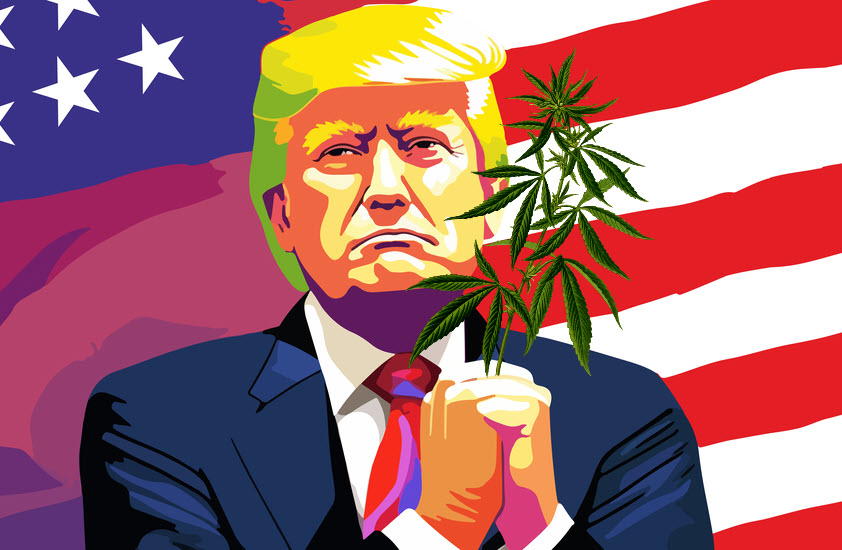
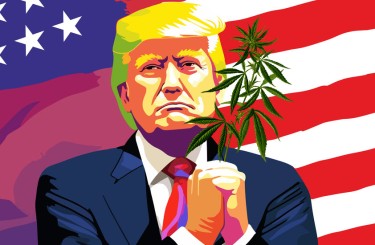
In a recent interview, former New Jersey Governor Chris Christie made headlines by asserting that President-elect Donald Trump will pursue significant reforms in federal policies regarding marijuana and cryptocurrency. As the nation grapples with evolving attitudes toward cannabis and the burgeoning digital currency market, Christie’s predictions have ignited discussions about the potential implications of such changes on both industries. This article delves into Christie’s insights, the current state of marijuana and cryptocurrency regulations, and the broader implications of these anticipated reforms.
The Current Landscape of Marijuana Legislation
Federal vs. State Laws
Marijuana remains classified as a Schedule I substance under the Controlled Substances Act (CSA), which places it in the same category as heroin and LSD. This classification has created a complex legal landscape where states have moved to legalize cannabis for medical and recreational use, while federal law continues to impose strict prohibitions. As of now, over 30 states have legalized marijuana in some form, leading to a burgeoning industry that generates billions in revenue.
Challenges Faced by the Cannabis Industry
Despite its legality in many states, the cannabis industry faces significant hurdles due to federal restrictions. These challenges include:
-
Banking Access: Many banks are hesitant to work with cannabis businesses due to fear of federal repercussions, forcing these businesses to operate largely in cash.
-
Taxation Issues: The IRS enforces Section 280E of the tax code, which prohibits businesses engaged in illegal activities from deducting normal business expenses, leading to disproportionately high tax burdens for cannabis companies.
-
Interstate Commerce: The lack of federal legalization prevents cannabis businesses from operating across state lines, limiting their growth potential.
Chris Christie’s Perspective on Marijuana Reform
Christie, a former presidential candidate known for his tough stance on drugs during his tenure as governor, has evolved his views on marijuana over the years. In his recent statements, he emphasized that Trump is likely to pursue descheduling cannabis, which would remove it from the Schedule I classification. This move would not only provide clarity for businesses operating in legal markets but also open avenues for banking and investment.
Christie highlighted that descheduling would allow for a more regulated market where safety standards could be established, thus protecting consumers. He believes that this approach aligns with a growing consensus among Americans who support legalization and recognize the potential benefits of cannabis use for both medical and recreational purposes.
The Future of Cryptocurrency Regulation = The Rise of Cryptocurrencies
Cryptocurrencies have surged in popularity over the past decade, with Bitcoin leading the charge as the first decentralized digital currency. The market has expanded to include thousands of alternative coins (altcoins), each with unique features and use cases. As cryptocurrencies gain traction among investors and consumers alike, regulatory scrutiny has intensified.
Current Regulatory Challenges
The cryptocurrency market faces several regulatory challenges that hinder its growth and adoption:
-
Lack of Clarity: Regulatory frameworks vary significantly across states and countries, creating confusion for investors and businesses.
-
Fraud and Scams: The rapid growth of cryptocurrencies has led to an increase in fraudulent schemes targeting unsuspecting investors.
-
Consumer Protection: Without clear regulations, consumers are often left vulnerable to risks associated with volatile markets.
Christie’s Vision for Crypto Regulation
Christie believes that under Trump’s leadership, there will be an effort to find a “sweet spot” for cryptocurrency regulation balancing innovation with consumer protection. He argues that overly stringent regulations could stifle growth in this emerging sector while too little oversight could expose consumers to significant risks.
In his view, a balanced regulatory framework would include:
1. Clear Definitions: Establishing clear definitions for different types of cryptocurrencies and tokens to differentiate between securities and utility tokens.
2. Consumer Protections: Implementing measures to protect investors from fraud while promoting transparency within the market.
3. Encouraging Innovation: Creating an environment conducive to innovation by allowing startups to thrive without excessive regulatory burdens.
Christie’s insights reflect a growing recognition among policymakers that cryptocurrencies are here to stay and that appropriate regulations are necessary to foster growth while safeguarding consumers.
Implications of Proposed Reforms
Economic Impact
The potential reforms proposed by Christie could have far-reaching economic implications:
-
Job Creation: Legalizing marijuana at the federal level could lead to significant job creation within the cannabis industry—from cultivation and production to retail sales.
-
Investment Opportunities: Descheduling cannabis would open up investment opportunities for institutional investors who have been hesitant due to federal restrictions.
-
Boosting Local Economies: Legal cannabis markets have proven beneficial for local economies through increased tax revenues and job creation.
Similarly, clear regulations around cryptocurrencies could stimulate investment in blockchain technology and related industries, fostering innovation and economic growth.
Social Justice Considerations
Both marijuana legalization and sensible cryptocurrency regulations have social justice implications:
-
Addressing Past Injustices: Legalizing marijuana could help rectify past injustices related to drug enforcement policies that disproportionately affected marginalized communities.
-
Financial Inclusion: Cryptocurrencies offer opportunities for financial inclusion for those underserved by traditional banking systems, particularly in low-income communities.
Political Landscape
The political landscape surrounding these issues is complex. While there is bipartisan support for marijuana reform among certain lawmakers, challenges remain in overcoming entrenched opposition. Similarly, cryptocurrency regulation has garnered attention from both sides of the aisle but requires collaboration to establish effective frameworks.
Conclusion
Chris Christie’s predictions about President-elect Donald Trump’s approach to federal marijuana descheduling and cryptocurrency regulation suggest a potential shift in U.S. policy that could significantly reshape both industries. As public opinion evolves on these issues, lawmakers have an opportunity to enact meaningful reforms that promote economic growth while ensuring consumer protection. The anticipated changes could foster a more robust cannabis industry that contributes positively to the economy and addresses social justice concerns, while clear regulatory frameworks for cryptocurrencies could encourage innovation and protect consumers in the digital economy. Stakeholders in both sectors are closely watching these developments, eager to see how potential reforms might impact their futures. While the realization of Christie’s predictions remains uncertain, it’s clear that the conversation around marijuana and cryptocurrency regulation is ongoing and far from settled.
TRUMP 2.0 ON CANNABIS REFORM, READ ON…
TRUMP 2.0 ON FEDERAL CANNABIS REFORM – WHAT DO WE KNOW?
Cannabis News
Webinar Replay: Post-Election Cannabis Wrap – Smoke ’em if You’ve Got ’em
Published
1 day agoon
November 13, 2024By
admin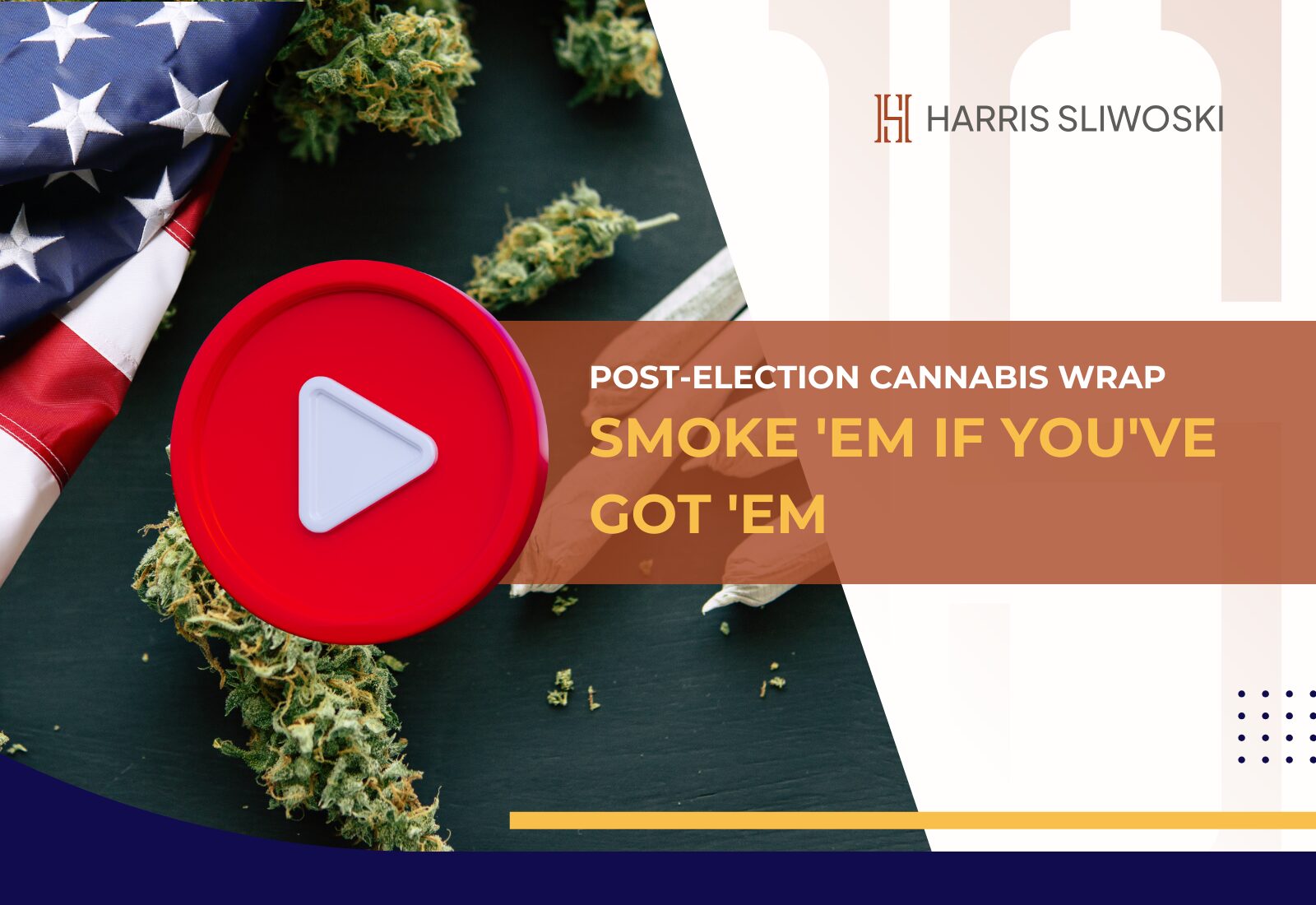
On Thursday, November 7th, Vince Sliwoski, Aaron Pelley and Fred Rocafort held a post election discussion “Post-Election Cannabis Wrap – Smoke ’em if You’ve Got ’em”. Watch the replay!
Key Takeaways from the “Smoke ’em if You’ve Got ’em – 2024 Post Election Cannabis Wrap” Webinar:
- Panelists:
- Vince Sliwoski: Oregon Business lawyer specializing in cannabis and commercial real estate.
- Aaron Pelley: Experienced in cannabis law since Washington’s legalization in 2012.
- Fred Rocafort: Trademark attorney working closely with the cannabis team.
- Election Results Overview:
- Most 2024 cannabis ballot measures did not pass.
- Florida, South Dakota, and North Dakota saw failures.
- Nebraska became the 39th state to legalize cannabis for medical use when it passed two cannabis initiatives, Initiatives 437 and 438.
- Federal and State-Level Developments:
- Medical use is currently legal in 38 states, and 24 states allow recreational use.
- Republican support for marijuana legalization is growing.
- Federal Policy Implications:
- Schedule III Rescheduling: The process to move cannabis to Schedule III is ongoing, which could significantly impact the industry.
- Importance of Federal Appointments: The future of cannabis policy depends heavily on who is appointed to key positions in the administration.
- International and Domestic Trade:
- Schedule III status could ease import/export restrictions on cannabis.
- Unified control of House, Senate, and presidency might expedite legislative progress.
- Economic and Industry Impact:
- Cannabis stocks experienced volatility post-election, reflecting investor uncertainty.
- Federal legalization and banking reforms are crucial for industry stability and growth.
- Future Outlook:
- The potential for federal rescheduling remains strong, with hearings scheduled for early 2025.
- State-level initiatives and regulatory developments will continue to shape the industry.


“How Long Does One Puff of Weed Stay in Your System?”… This topic can be difficult to answer since it is dependent on elements such as the size of the hit and what constitutes a “one hit.” If you take a large bong pull then cough, it might linger in your system for 5-7 days. A moderate dose from a joint can last 3-5 days, whereas a few hits from a vaporizer may last 1-3 days.
The length of time that marijuana stays in the body varies based on a number of factors, including metabolism, THC levels, frequency of use, and hydration.
Delta-9-tetrahydrocannabinol, or THC, is the primary psychoactive component of cannabis. THC and its metabolites, which remain in your body long after the effects have subsided, are detected by drug tests.
Since these metabolites are fat-soluble, they cling to bodily fat molecules. They could thus take a while to fully pass through your system, particularly if your body fat percentage is higher.
THC is absorbed by tissues and organs (including the brain, heart, and fat) and converted by the liver into chemicals such as 11-hydroxy-THC and carboxy-THC. Cannabis is eliminated in feces at a rate of around 65%, while urine accounts for 20%. The leftover amount might be kept within the body.
THC deposited in bodily tissues ultimately re-enters the circulation and is processed by the liver. For frequent users, THC accumulates in fatty tissues quicker than it can be removed, thus it may be detectable in drug tests for days or weeks following consumption.
The detection time varies according to the amount and frequency of cannabis usage. Higher dosages and regular usage result in longer detection times.
The type of drug test also affects detection windows. Blood and saliva tests typically detect cannabis metabolites for shorter periods, while urine and hair samples can reveal use for weeks or even months. In some cases, hair tests have detected cannabis use over 90 days after consumption.
Detection Windows for Various Cannabis Drug Tests
Urine Tests
Among all drug tests, urine testing is the most commonly used method for screening for drug use in an individual.
Detection times vary, but a 2017 review suggests the following windows for cannabis in urine after last use:
– Single-use (e.g., one joint): up to 3 days
– Moderate use (around 4 times a week): 5–7 days
– Chronic use (daily): 10–15 days
– Chronic heavy use (multiple times daily): over 30 days
Blood Tests
Blood tests generally detect recent cannabis use, typically within 2–12 hours after consumption. However, in cases of heavy use, cannabis has been detected up to 30 days later. Chronic heavy use can extend the detection period in the bloodstream.
Saliva Tests
THC can enter saliva through secondhand cannabis smoke, but THC metabolites are only present if you’ve personally smoked or ingested cannabis.
Saliva testing has a short detection window and can sometimes identify cannabis use on the same day. A 2020 review found that THC was detectable in the saliva of frequent users for up to 72 hours after use, and it may remain in saliva longer than in blood following recent use.
In areas where cannabis is illegal, saliva testing is often used for roadside screenings.
Hair Tests
Hair follicle tests can detect cannabis use for up to 90 days. After use, cannabinoids reach the hair follicles through small blood vessels and from sebum and sweat surrounding the hair.
Hair grows at approximately 0.5 inches per month, so a 1.5-inch segment of hair close to the scalp can reveal cannabis use over the past three months.
Factors Affecting THC and Metabolite Retention
The length of time THC and its metabolites stay in your system depends on various factors. Some, like body mass index (BMI) and metabolic rate, relate to individual body processing, not the drug itself.
Other factors are specific to cannabis use, including:
– Dosage: How much you consume
– Frequency: How often you use cannabis
– Method of consumption: Smoking, dabbing, edibles, or sublingual
– THC potency: Higher potency can extend detection time
Higher doses and more frequent use generally extend THC retention. Cannabis consumed orally may remain in the system slightly longer than smoked cannabis, and stronger cannabis strains, higher in THC, may also stay detectable for a longer period.
How Quickly Do the Effects of Cannabis Set In?
When smoking cannabis, effects appear almost immediately, while ingested cannabis may take 1–3 hours to peak.
The psychoactive component THC produces a “high” with common effects such as:
– Altered senses, including perception of time
– Mood changes
– Difficulty with thinking and problem-solving
– Impaired memory
Other short-term effects can include:
– Anxiety and confusion
– Decreased coordination
– Dry mouth and eyes
– Nausea or lightheadedness
– Trouble focusing
– Increased appetite
– Rapid heart rate
– Restlessness and sleepiness
In rare cases, high doses may lead to hallucinations, delusions, or acute psychosis.
Regular cannabis use may have additional mental and physical effects. While research is ongoing, cannabis use may increase the risk of:
– Cognitive issues like memory loss
– Cardiovascular problems including heart disease and stroke
– Respiratory illnesses such as bronchitis or lung infections
– Mood disorders like depression and anxiety
Cannabis use during pregnancy can negatively impact fetal growth and development.
Duration of Effects
Short-term effects generally taper off within 1–3 hours, but for chronic users, some long-term effects may last days, weeks, or even months. Certain effects may even be permanent.
Bottom Line
The amount of time that cannabis remains in your system following a single use varies greatly depending on individual characteristics such as body fat, metabolism, frequency of use, and mode of intake. Frequent users may maintain traces of THC for weeks, whereas infrequent users may test positive for as little as a few days. Hair tests can disclose usage for up to 90 days, while blood and saliva tests identify more recent use. Urine tests are the most popular and have varying detection durations. The duration that THC and its metabolites are detectable will ultimately depend on a number of factors, including dose, strength, and individual body chemistry.
PEE IN A CUP COMING UP, READ ON..

Latest Trump Weed Rumor – Trump Will Federally Deschedule and Decriminalize Cannabis, but Not Legalize It

Webinar Replay: Post-Election Cannabis Wrap – Smoke ’em if You’ve Got ’em

I Had Just One Puff

Marijuana firms Eaze, Green Dragon find new life after $10 million capital infusion

Get some rest on Modified Grapes—November’s Leafly HighLight

Is Kratom Addictive? Understanding Dependence, Risks, and Safe Usage

New Rule, December 5: Oregon Cannabis Retailers, Processors and Labor Peace Agreements

The CBD Dog Treat Guide

Trippin’ Golf Balls – Can Magic Mushrooms Help Your Golf Game?

Australian Broadcasting Corp Alleges Military Veterans Have Been Targeted By Medicinal Cannabis Companies Via Social Media & Offered Free “Product”

Distressed Cannabis Business Takeaways – Canna Law Blog™

United States: Alex Malyshev And Melinda Fellner Discuss The Intersection Of Tax And Cannabis In New Video Series – Part VI: Licensing (Video)

What you Need to Know

Drug Testing for Marijuana – The Joint Blog

NCIA Write About Their Equity Scholarship Program

It has been a wild news week – here’s how CBD and weed can help you relax

Cannabis, alcohol firm SNDL loses CA$372.4 million in 2022

A new April 20 cannabis contest includes a $40,000 purse

Your Go-To Source for Cannabis Logos and Designs

UArizona launches online cannabis compliance online course
Trending
-

 Cannabis News2 years ago
Cannabis News2 years agoDistressed Cannabis Business Takeaways – Canna Law Blog™
-

 One-Hit Wonders2 years ago
One-Hit Wonders2 years agoUnited States: Alex Malyshev And Melinda Fellner Discuss The Intersection Of Tax And Cannabis In New Video Series – Part VI: Licensing (Video)
-

 Cannabis 1012 years ago
Cannabis 1012 years agoWhat you Need to Know
-

 drug testing11 months ago
drug testing11 months agoDrug Testing for Marijuana – The Joint Blog
-

 Education2 years ago
Education2 years agoNCIA Write About Their Equity Scholarship Program
-

 Cannabis2 years ago
Cannabis2 years agoIt has been a wild news week – here’s how CBD and weed can help you relax
-

 Marijuana Business Daily2 years ago
Marijuana Business Daily2 years agoCannabis, alcohol firm SNDL loses CA$372.4 million in 2022
-

 California2 years ago
California2 years agoA new April 20 cannabis contest includes a $40,000 purse






